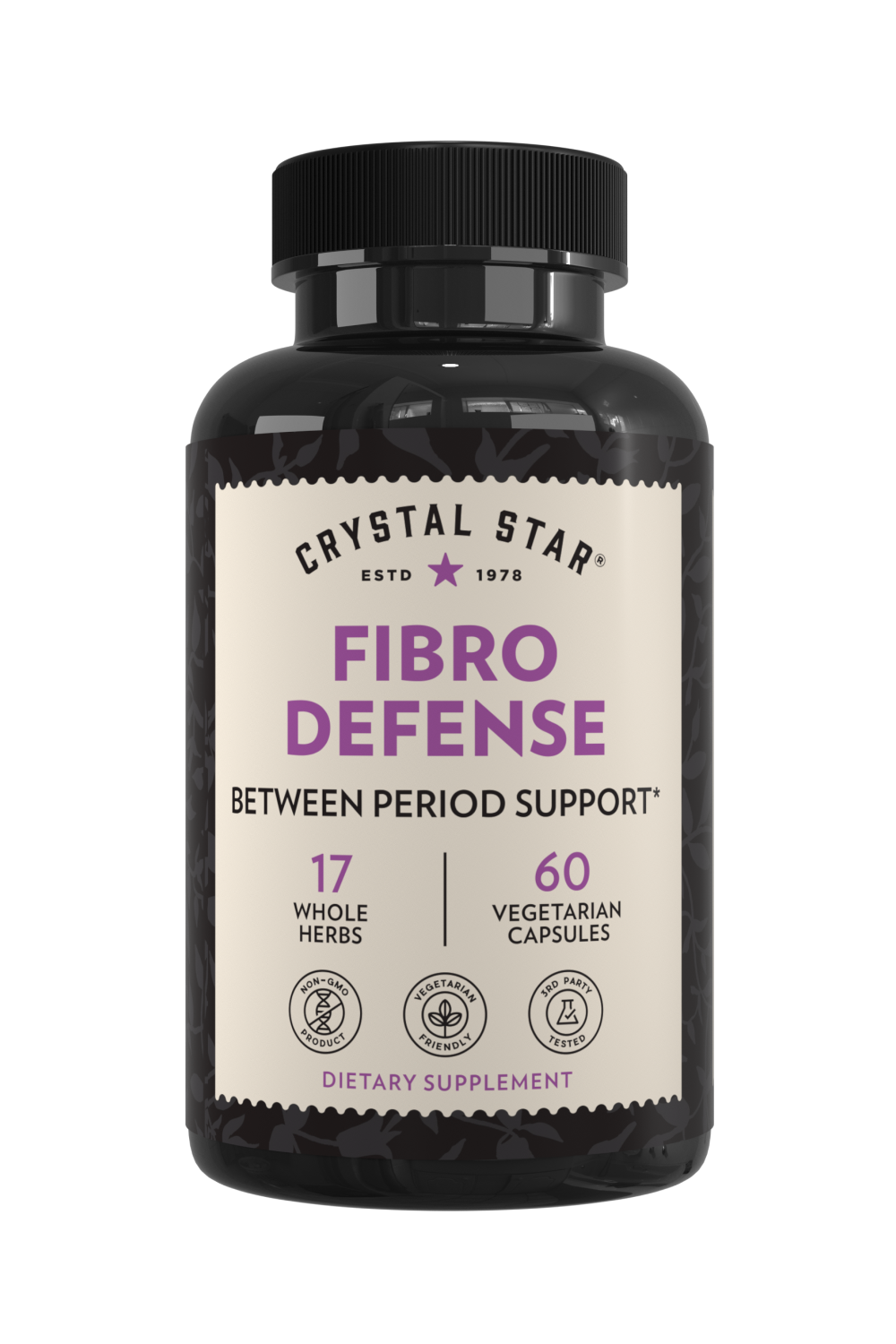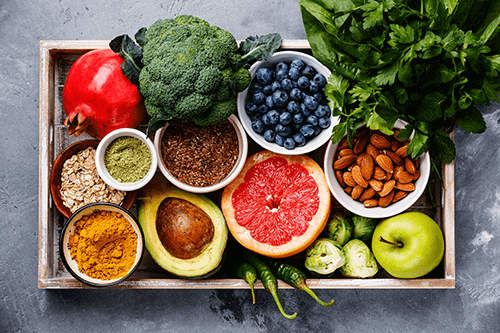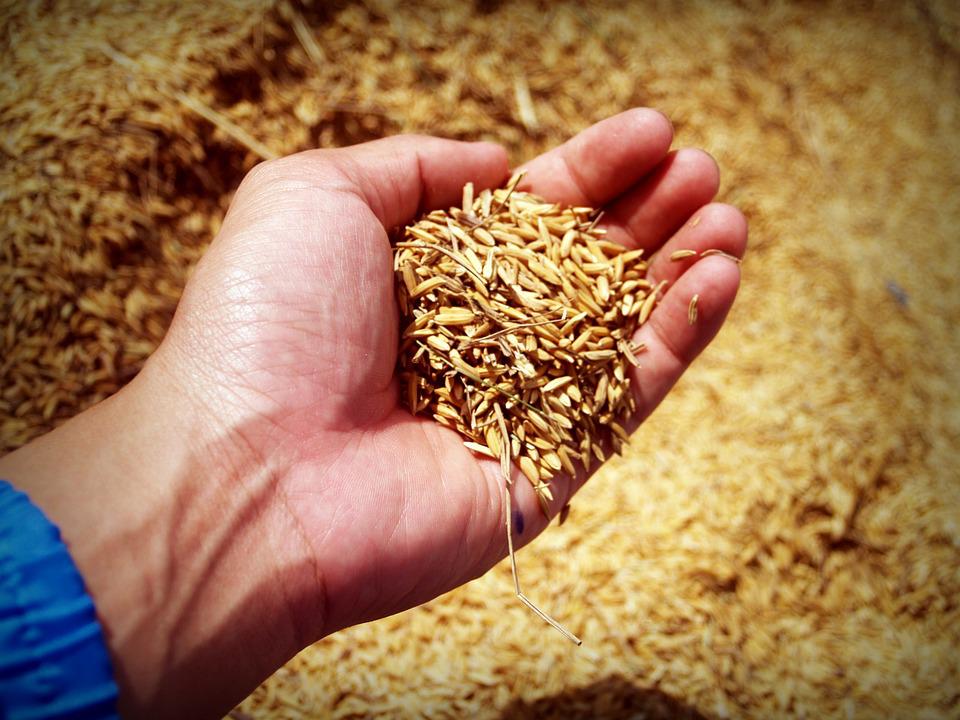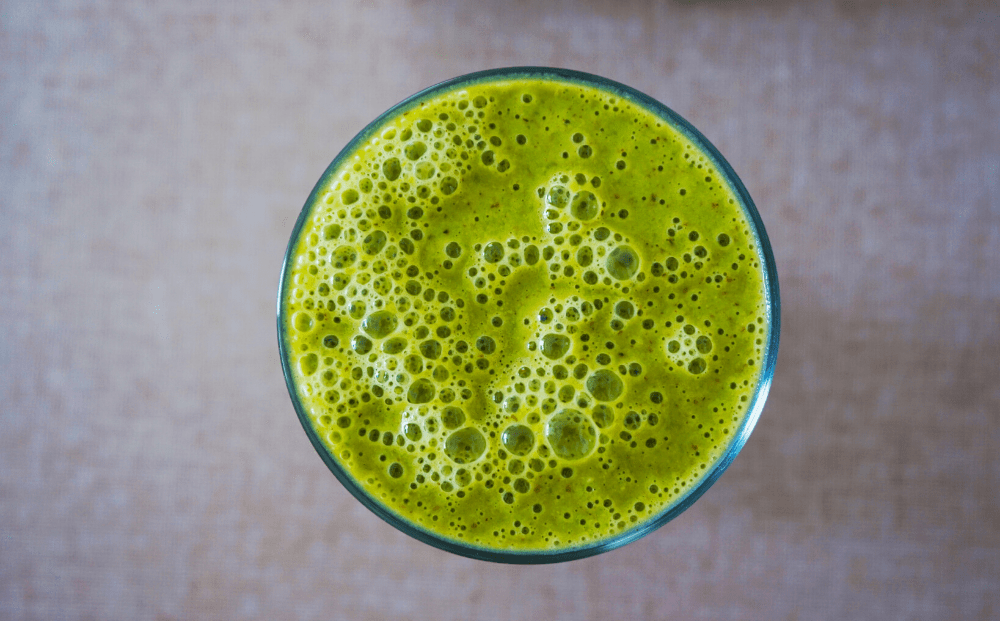
How metabolism changes with age and what you can do about it
As the years creep up on us, we’re too often reminded that our metabolism isn’t what it used to be. We may not be able to pull off those days of eating not-so-nourishing foods, or having a non-active lifestyle while maintaining the same weight. This is because your metabolism slows down as you age, making it easier to put on weight and harder to lose it. While the exact age of when metabolism starts to slow is not quantifiable, in general fat mass increases and muscle mass decreases with age. Although many feel as though this is just a cruel fact of life, there are things we can do to reduce the natural decline of our metabolism (and even boost it), but first things first: what is metabolism?
What is metabolism?
Metabolism is a set of chemical changes within a cell that provides energy for other cellular functions (for example, cell division and protein and fat synthesis). It also provides energy for other body systems and helps eliminate waste.
What is the difference between basal and resting metabolic rate?
Basal and resting metabolic rates both measure the energy required for basic body functions, but they have slightly different testing parameters. Your basal metabolic rate (BMR) is the minimum number of calories your body needs just to exist without any exertion. BMR is measured in a lab while completely lying motionless after at least eight hours of sleep in a temperature-controlled environment. Your resting metabolic rate (RMR) measures the number of calories your body burns at rest under less restrictive conditions, but also includes the number of calories burned eating and conducting small amounts of activity. Both of these together are used to estimate the number of calories you burn if you’re at rest (kilocalories burned not accounting for exercise) for 24 hours. These rates, along with other factors like genetics, lifestyle, age, gender, and pre-existing medical conditions, help determine your metabolism. The higher the BMR and RMR, the higher your metabolism and the more calories you burn, making it easier to lose weight and keep it off.
What’s the connection between strength training and metabolism?
Muscle loss occurs naturally as you age, especially if you’re neglecting working your muscles through strength training. So why can this be problematic for weight loss? Because skeletal muscle helps maintain blood glucose and healthy calorie burn.[1] Promoting “hypertrophy”, or the growth of muscular fibers through strength training, promotes mitochondrial biogenesis, aka the cellular increase of mitochondrial mass.[2] Mitochondria are often referred to as, “the powerhouses of the cell” since they turn glucose into energy. This leads to not only greater energy production, but also an increase in metabolism. Strength training also improves lean muscle, which is associated with reduced incidence of insulin resistance.[3] Insulin resistance is when your cells start to become resistant to the effects of insulin, not allowing blood sugar to enter the cell and be used as fuel. This is a risk factor for heart disease and type 2 diabetes, which often have blood sugar imbalance as the root cause.
Can herbs boost metabolism?
Herbs are often used by holistic practitioners, and for good reason. They typically offer varying benefits besides the intended use and a potentially better safety profile than pharmaceuticals. There have been certain herbs identified within scientific literature to benefit metabolism in varying mechanisms of action, including:
Fenugreek
This herb, used in many Indian dishes, offers many benefits for metabolism by helping regulate blood sugar. Regulated blood sugar keeps your energy balanced throughout the day and helps promote a healthy insulin response. A healthy insulin response ensures a healthy immune system by preventing hyperglycemia. Hyperglycemia can lead to systemic inflammation that in turn can cause mitochondrial damage, which slows metabolism. Insulin can also act directly on immune cells to boost immune function.[4] Fenugreek seeds have also been shown to have hypolipidemic (blood-lipid-lowering) and antioxidant effects in pre-clinical and clinical studies, all of which affect metabolism.[5]Turmeric
A potent anti-inflammatory herb traditionally used in Ayurvedic practice, turmeric has been shown to downregulate NF-kB. NF-kB is a transcription factor, meaning that it can turn genes on and off. The role of NF-kB is to signal the nucleus of our cells (where DNA is housed) to increase the production of inflammatory molecules. By downregulating NF-kB, turmeric works to suppress inflammation. Turmeric also works at improving metabolism by increasing brown fat.[6] Although brown fat sounds like something you don’t want to increase, it can help combat obesity according to some preclinical models.[7] These studies have shown that brown fat’s purpose is to transfer energy from food into heat, which in turn can rev up metabolic activity. For more information on turmeric, check out Turmeric—the humble spice with impressive health benefits.Goldenseal
One of the most popular herbs sold today, goldenseal was traditionally used in Native American cultures. The juice from the roots was used as a dye to stain skin and clothes, while the root and rhizome were used for immune and gastrointestinal health. Goldenseal contains berberine, which inhibits the fat stores that promote inflammation—which in turn leads to insulin resistance.[8] [9] The berberine in goldenseal also activates AMPK. AMPK is an enzyme that plays a vital role in regulating cellular metabolism.[10] Animal studies have shown that aging may decrease the efficiency of AMPK which can impair metabolism.[11] By activating AMPK, you can help offset or even potentially improve functioning of this enzyme and thus promote healthy metabolism.Siberian eleuthero root
In 2010, an eight-week study found that eleuthero enhances cardiovascular endurance by increasing how efficiently your heart, lungs, and blood vessels supply oxygen-rich blood to your muscles. Siberian eleuthero also delays muscle fatigue by saving stored glucose towards the final stages of an exercise to be used as fuel. This can allow for better energy throughout your workout and for you to be able to exercise longer without feeling worn down as easily.[12] Both of these processes can improve metabolic function or an increase in the amount of calories you burn during and after a workout.Green tea
Green tea is widely promoted for its fat burning and metabolism-boosting properties. But what does the science say? Experimental studies have shown that green tea contains caffeine and catechins. Catechins are a type of disease-fighting antioxidants, the main one in green tea is called EGCG. This catechin contributes to an increase in metabolism through varying mechanisms. Two of these include an increase in fat oxidation, or the breakdown of fatty acids from fat cells and an increase in 24 hour calorie expenditure.[13] This breakdown from fat cells allows for those stored fatty acids to be used for fuel and an increased calorie expenditure ensures that resting metabolic rate could be increased.Green tea, the microbiome, and metabolism
Another mechanism discussed is green tea and its effect on the microbiome or the billions of bacteria that remain in a symbiotic relationship with you and take residence in your gut. A study from 2018 that reviewed the weight loss-effects of tea polyphenols found that green tea positively modulates the microbiome in a favorable way, which helps improve weight loss.[14] This is because the polyphenols (a compound found in green tea) act as “prebiotics”, or fuel for your commensal bacteria. The bacteria within your gut ferment the polyphenols and use them as a substrate for energy production. That fuel aids in varying ways because intestinal bacteria have been shown to affect fat storage, blood-glucose balance, and hormones that affect hunger and satiety.Can stress affect metabolism?
Heightened stress levels tend to cause disruptions in the balance of hormones such as cortisol. Cortisol gets much of the blame for causing negative health effects. Yet, it plays a vital role in reducing inflammation, improving body’s metabolism of glucose, controlling blood pressure, and your body’s response to stress or danger. The issue is when cortisol is either too low or high, but many people are prone to excess cortisol due to everyday stressors and excess stimulation from the world we live in today. This is so prevalent that excess cortisol is even recognized as a problem by Western medicine as hypercortisolism, or Cushing’s syndrome. This is a condition that occurs from exposure to high cortisol levels for a long time and includes symptoms ranging from a fatty hump between the shoulders, a rounded face, and pink or purple stretch marks. Cortisol and insulin have an intricate relationship.[15] When cortisol chronically increases, insulin resistance can begin to occur. An accumulation of visceral fat, or fat stored within the abdominal region is also amplified, leading to a lowered metabolism. Excess cortisol can also cause lowered thyroid-stimulating hormone levels.[16] Lowered TSH levels impair thyroid hormone production and function. This can lead to a lowered metabolism and energy production since thyroid hormones are vital for proper cellular respiration, i.e. the metabolic reactions needed to produce ATP—the energy fuel for cells.
Stress management tips
We often overlook stress as an aspect of healthy weight management and metabolism. This is especially true in today's society, where non-stop work and productivity are glorified. Burnout sometimes feels inevitable, but taking measures to ensure stress management tools are in place is imperative to boosting your metabolism. Implementing any mindfulness activity like breathework, yoga, or a self care routine can help balance the autonomic nervous system which is made up of two branches, the parasympathetic and sympathetic nervous system.[17] These two branches of the nervous system are both constantly at play to control internal organs without conscious recognition. The sympathetic arm of the autonomic nervous system is typically dominant in dangerous or stressful situations, and referred to as the “fight or flight” branch. The parasympathetic is typically dominant in a calm state, and referred to as the “rest or digest” arm. Mindfulness activities like yoga and meditation help activate the parasympathetic arm of the nervous system which can be suppressed in today’s stressful society. This allows for the body to divert resources towards healing and positively influences the immune system by decreasing inflammation. One systematic review (which is one of the highest forms of scientific evidence we have available) in 2008 looking at 15 separate trials, reviewed that yoga can downregulate pro-inflammatory markers in the body and “may exert further beneficial effects by enhancing cell-mediated and mucosal immunity”.[18] For more information on mindful breathwork, check out Deep breathing calms you down. What else can it do for your health?
Conclusion
Although age-related decline in metabolism seems inevitable and you may not be able to keep the same routines as you did in your teens and twenties, there are research-backed ways to slow down this decline. Various biochemical factors play a role in the maintenance of metabolism and metabolic function. Many of these factors can be modulated with different lifestyle factors. Exercise can help maintain lean muscle mass, while increasing mitochondria (the powerhouse of our cells) function to improve metabolism. Incorporating herbs with metabolic boosting effects like fenugreek, turmeric, goldenseal, green tea, and eleuthero can be a complement to diet and exercise. These herbs work by improving fat burning effects and activating enzymes involved in regulating metabolism. Maintaining a normal cortisol level that is neither too high or low also helps maintain a healthy weight. Implementing stress-management strategies can help blunt the excess cortisol that so many of us deal with, while allowing for normalized blood sugar and thyroid functions which improve metabolism. So the next time you notice changes in your body, don’t worry. Changes to your lifestyle and self-care can help promote that youthful metabolism that so many of us dread losing. Blayne Andrews is a future functional medicine registered dietitian. Armed with a passion for helping people claim bodily autonomy and take their health into their own hands, Blayne hopes to teach people the evidence-based science to alternative care and a root-cause approach to wellness.
References: [1] https://www.ncbi.nlm.nih.gov/pmc/articles/PMC3661116/ [2] https://www.ncbi.nlm.nih.gov/pmc/articles/PMC3883043/ [3] https://www.ncbi.nlm.nih.gov/pmc/articles/PMC3661116/ [4] https://www.ncbi.nlm.nih.gov/pmc/articles/PMC3992527/ [5] https://www.ncbi.nlm.nih.gov/pmc/articles/PMC4623635/ [6] https://www.ncbi.nlm.nih.gov/pubmed/26362189 [7] https://www.ncbi.nlm.nih.gov/pmc/articles/PMC5510441/ [8] https://www.ncbi.nlm.nih.gov/pmc/articles/PMC3310165/ [9] https://www.ncbi.nlm.nih.gov/pmc/articles/PMC1483173/ [10] https://www.ncbi.nlm.nih.gov/pmc/articles/PMC1483147/ [11] https://www.ncbi.nlm.nih.gov/pubmed/15284083 [12] https://www.ncbi.nlm.nih.gov/pubmed/21793317 [13] https://ircmj.com/en/articles/55950.html [14] https://www.ncbi.nlm.nih.gov/pmc/articles/PMC6099746/ [15] https://www.ncbi.nlm.nih.gov/pubmed/24918858 [16] https://www.ncbi.nlm.nih.gov/pubmed/10770171 [17] https://www.ncbi.nlm.nih.gov/pmc/articles/PMC6037091/ [18] https://www.ncbi.nlm.nih.gov/pubmed/29429046








